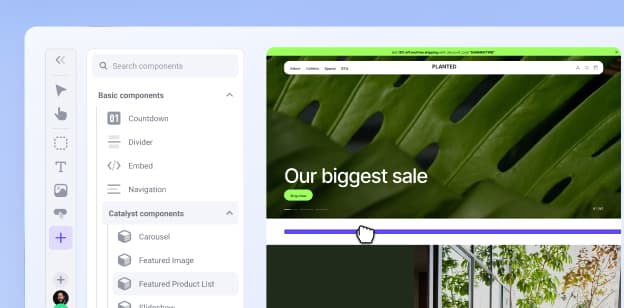
Sell more, however your customers shop.
Seamlessly blend brick-and-mortar with ecommerce when you unlock Click and Collect functionality on BigCommerce.

8-Figure Private Label Seller Shares His 9 Steps to Success
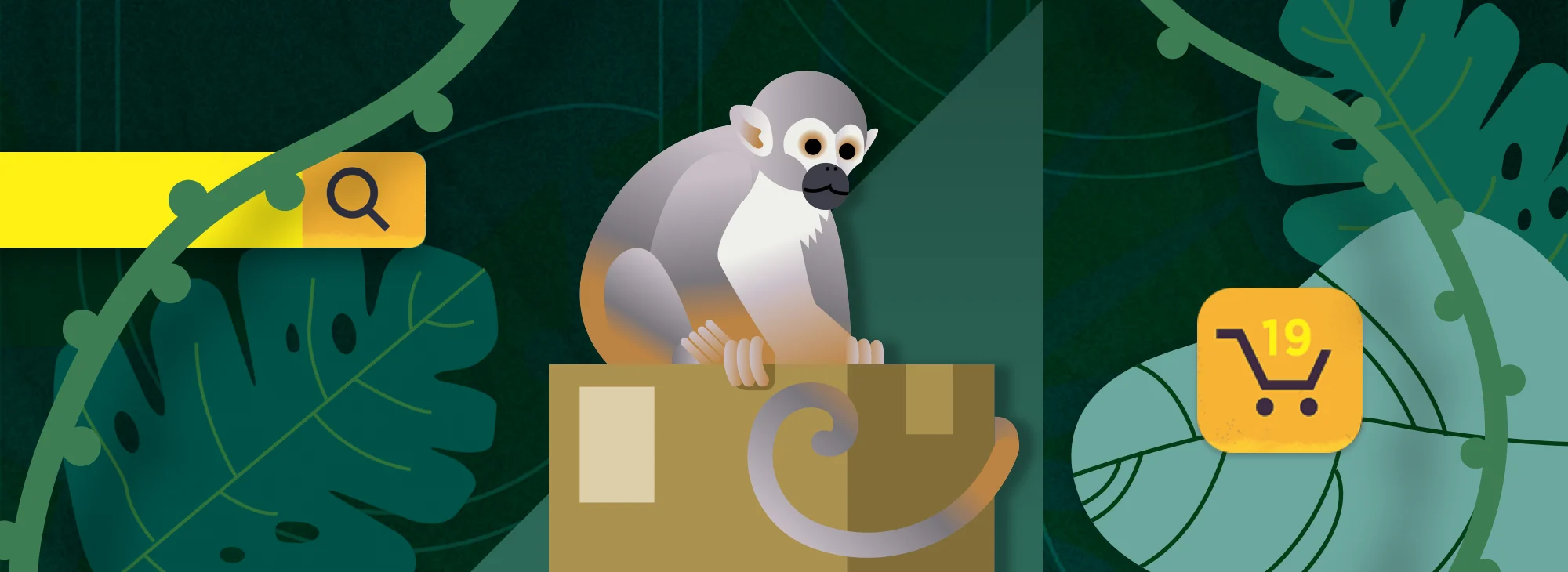
Just five years ago, I was a civil engineer straight out of college struggling in the 9-5 world.
Obsessed with escaping that constricting environment, I started selling products on Amazon.
Today, I run a company that has more than 40 SKUs and a full-time staff managing my private label goods, which earn over 8 figures per year.
This chapter covers how I did it.
First things first…
What Are Private Label Products?
Private label products are goods and services created by one company to be sold and branded by another company.
Popular examples of private label products include Walmart’s Great Value brand, Target’s Mainstays, and Amazon’s Amazon Essentials.
In addition to physical products, intangibles and services such as freelance work, web domains, and insurance products can also be private label products.
How to Find and Sell Private Label Products
If you’re interested in starting your own online business, it doesn’t get much better than selling private label products using Amazon’s Fulfilled-by-Amazon (FBA) program.
It’s pretty easy to do and there are a lot of tools in place to help you succeed. Below, I cover the nine basic steps to success.
1. Brainstorm Product Ideas.
Ideas can come from anywhere.
Over the years, I’ve found a few cool hacks to get killer ideas for private label products.
First, whenever I’m out shopping or rummaging through a store, I keep a look out for hot, new trending products.
This is usually newer stuff; the kind of items that Wal-mart and Target haven’t started stocking.
For example, I was recently in Anthropologie and saw a set of copper measuring cups priced at $25.00. I thought, “Perfect!”
Once I got home, I plugged the idea into my research tools and confirmed that it was an awesome opportunity.
A second place to look for product ideas is Amazon itself.
Dig through the departments and subcategories to look for new products (be sure to pay attention to the “Hot New Releases” columns!).
Look at what other sellers are offering by checking out their Amazon storefronts and product listings.
Finally, I check out the web for cool product ideas, too.
Social media’s always got some wild, new product idea that’s going viral. And check out Kickstarter and IndieGoGo too, where brilliant inventors are finding new, innovative ways to pitch products.
2. Consider Specific Product Attributes.
So what sort of private label products should you try to sell?
If you’re just starting out, I highly recommend starting with products that have the following qualities:
Small and lightweight. Your product should be able to fit into a small, flat-rate box (8 11/16″ x 5 7/16″ x 1 3/4″) and weigh no more than one or two pounds. This helps you save on shipping both from the manufacturer and later, when it is fulfilled (either by you, or by Amazon FBA).
Non-seasonal. Your product’s sales should NOT be season-dependent. Examples of seasonal products include: Christmas lights, Valentine’s Day gifts, winter clothing, etc. Avoid these whenever possible.
Unregulated. Certain products like food, toys, and batteries come with “red tape” that can make selling that product difficult. I recommend that you stick to stuff that’s easy to manufacture and distribute; items that don’t require a lot of legal paperwork and/or certifications.
Uncomplicated. Electronics can be fun to sell, but they often come with a lot of headaches and customer service issues. The same is true for fashion and clothing products, which may require you to have multiple colors and sizes for a single SKU.
3. Conduct Market Research.
Once you’ve found a few cool products you’d be interested in selling as private label products, you’ll need to do a little market research to determine whether or not it’s worth selling.
Back when I started selling my own private label products on Amazon FBA, you had to do it the hard way: with a spreadsheet, and a lot of time spent staring at product listings.
These days, we have applications like Jungle Scout’s Chrome Extension to help us, which can do product research for us instantly.
Here’s how it works:
Perform a search on Amazon.com using your product idea as a search term. For example, I’m going to look up “copper measuring cups.”
After the search results page loads, click the “JS” button to the right of your browser search/address bar to open the Jungle Scout Chrome Extension (you will need to have purchased and downloaded the extension for it to work).
Verify the product’s data. The Chrome Extension will show you the average monthly sales, average reviews per product, and more for the search’s results.
And that’s it!
Of course, you’ll need to know what sort of criteria to look for.
Personally, I prefer products that sell an average of 250 – 400 units per month.
Also, I don’t want too much competition when I launch a product, so I make sure that the average number of reviews for a product is less than 100.
4. Research Product Suppliers and Manufacturers.
Now that you have the perfect product idea, and you’ve verified the sales data using the Jungle Scout Chrome Extension, all that’s left to do is to get it made!
Thankfully, in 2020, we have Alibaba to help us get that done.
If you’re not familiar with Alibaba, Alibaba is more-or-less the Amazon of China, allowing us to purchase wholesale and bulk products directly from overseas manufacturers.
And not only is Alibaba easy to use, but it’s safe, too, as they thoroughly vet all of their suppliers.
Here are the basic steps to finding potential suppliers on Alibaba for your private label product:
Create a buyer account on Alibaba.com.
Perform a search for your product on Alibaba; Alibaba’s product database works similarly to Amazon’s.
Find product listings that are similar to the private label product idea you wish to sell.
Send a message to the product supplier/manufacturer requesting more information about the product. I like to ask the following:
What is the price per unit for this product when I order 500 units (or however many units need to be ordered)?
Can I have a sample shipped to my location? If so, what’s the cost?
What payment terms and methods do you accept?
How can I customize this product?
Typically, I reach out to 3-5 suppliers for a product.
From each of these suppliers, I order a sample of the product.
5. Finalize Your Logo, Design, and Packaging.
Since it’s a private label product, we can put our own logo on the packaging and the product itself.
If you’re like me and not handy with graphic design, you can find professional, inexpensive graphic designers to design eye-catching logos for your products on freelance sites, like Jungle Market.
In addition, I like to make the design of the product a little different than the others already on the market.
And you don’t have to be an engineer to customize your products either.
Sometimes, customization can be as simple as changing the product’s color or making a product’s handle a little longer.
Finally, I try to offer the best packaging I can.
Thoughtful packaging really improves the customer experience.
Plus, you can put your brand’s website URL, helpful information, and more on your packaging, improving your marketing efforts.
6. Determine Your Fulfillment Strategy.
Of course, knowing what to sell and how to manufacture private label products is only half the battle.
We also need a way to get our products to our customers.
There are tons of ways you can fulfill your orders though.
Some people fulfill their own goods from their garage or even their own warehouse. Others use third-party fulfillment centers to ship their goods.
I mostly rely on Amazon’s own internal fulfillment service: FBA.
Since its introduction in 2008, FBA’s been a game-changer for Amazon sellers.
Not only do you get access to Amazon’s 2.5 billion monthly shoppers, but Amazon actually handles your products for you.
All you have to do is send your inventory to Amazon. From there, they store, pick, pack, and ship your goods for you…not to mention the fact that they also handle your customer service.
7. Decide On Your Manufacturer.
Now that all of our ducks are in a row, what’s next?
We know what we’re going to sell, and how well it’s expected to sell once it’s listed on Amazon, thanks to our market research.
Plus, we created a cool logo, design, and package for it, too. And we know that Amazon is going to do our fulfillment for us.
Next, it’s time to decide on a manufacturer.
You might remember, in step 4, that we recommend reaching out to 3-5 potential manufacturers for your private label product and ordering samples from each.
That part of the decision-making process is extremely important; you need to get it right.
And you can tell a lot about a manufacturer by how quickly they ship samples to you, the condition the sample is in when it arrives, and the communication involved in tracking its status.
For me, this is more significant than the actual cost of the product itself.
One mistake I want to help you avoid is going with the manufacturer that has the lowest cost, even if the quality of the product and your communication with the supplier are less than stellar.
Obviously, we want our costs to stay low, but sometimes the cheapest product isn’t always the best product.
Instead, I recommend using the lower price quotes to help negotiate prices down with the manufacturers that have better communication and fulfillment skills.
Once we’ve selected our supplier, we will arrange payment via our preferred method, as most suppliers will accept PayPal or Alibaba’s Trade Assurance to process safe and secure payments.
8. Create Your Amazon Listing.
It takes roughly 3-4 weeks for a manufacturer to create a product, and another 1-2 weeks to ship it to the seller or the nearest Amazon fulfillment center.
That 4-6 week period is the perfect time to create our Amazon listing.
First, when creating an Amazon listing, make sure you have everything ready to publish and launch in advance.
Second, great product photos are a must. And unless you have some serious photography skills, I recommend hiring a professional.
If you have trouble finding a photographer on your own, Jungle Market is an excellent place to find quality freelancers.
Next, the title.
It is one of the most important elements of your Amazon private label product listing.
It’s what helps Amazon determine where your product should be seen in its database.
Therefore, make sure that the keywords you use in your title are relevant!
For example, if you’re selling “copper measuring cups” and want to rank for that keyword, be sure to include “copper measuring cups” at the front of the title.
Then, follow that set of keywords with the secondary and tertiary keywords you want to rank for as well.
Lastly, incorporate your products’ strongest features and benefits in the product description field and bullet points.
These help customers make a purchasing decision when they click through to your page.
The more your private label product meets their wants and needs, the more likely they are to buy.
9. Optimize Your Listing to Increase Sales.
While much of the Amazon FBA private label selling process is “set it and forget it”, you still want to make sure your product listing is doing everything it can to earn sales.
Amazon’s internal advertising system – Amazon PPC – is an awesome way to draw attention to your private label product.
With Amazon PPC, you bid on “sponsored ads”, and these ads help your product appear on the first page of search results, on remarketing ads outside of Amazon, and even on your competitors’ product pages.
You can run reports via Amazon Seller Central to find out the keywords that are selling/converting, helping you determine the keywords to bid on via PPC.
Also, you can use Jungle Scout’s Keyword Scout tool to see what keywords your competitors are using to make sales.
After a few weeks of tweaking and adjusting your bids, you can double – even triple! – your Amazon sales.
Once you get comfortable with Amazon PPC and the Amazon sales process, you can use other tools to run tests on the effectiveness of the various elements of your Amazon FBA private label product listing.
A/B testing (or split testing) is an effective way to see what works and what doesn’t.
When split testing, you run two concurrent tests featuring small changes to your product listing (eg. main image, price point, etc.).
Then, automated software like Splitly helps you see what works and what doesn’t.
I’m often surprised to learn images and titles I thought were bringing in sales were actually hurting me.
How to Price Private Label Products on Amazon.
A question I am often asked is how to price products effectively on Amazon.
Most new sellers instinctually set a very low (or even the lowest) price point for their product, but that’s a big mistake.
I rarely, if ever, set my private label product’s price so that it is priced lower than my competitors’.
Instead, I try to make my product stand out in other ways.
Whether it’s through better design and packaging, tighter sales and marketing language in the product listing itself, or even through killer customer service offered after the sale is made, I make sure my product stands out (think ‘purple cow’!).
Still, as a rule of thumb, you should try to keep your price point within 20% of your competitors’ average sales price.
For example, if I discover that “copper measuring cups” are selling for around $25.00 on Amazon, I try not to price mine less than $20 or higher than $30.
Furthermore, I always try to launch private label products on Amazon that sell between $20 and $50.
I find that if I do less than $20, it can be difficult to turn a profit after I subtract out the cost of goods and advertising expenses.
On the other hand, if I go above $50, I leave myself open to slower conversion rates and bad reviews from value-based scrutiny.
Examples of Private Label Products to Sell in 2020.
Here are some examples of private label products that were found using the same ideation and research methods above.
I’ve also included screenshots of the Jungle Scout Chrome Extension Pro, so you can see the metrics for each product.
Of course, be sure to perform your own research as the market can (and will) change at any moment:
1. Homeschool Planner.
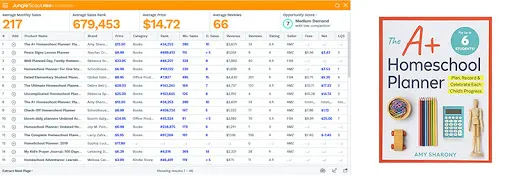
2. Funny Hat.
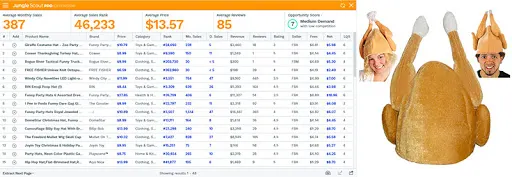
3. Copper Measuring Cup.
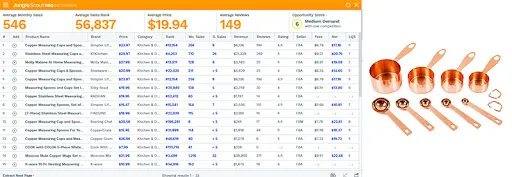
Executive Summary
If you’re looking for a fun and easy way to get started selling your own branded products online, then look no further than Amazon FBA private label.
The biggest piece of advice I give to every new seller interested in this method is to simply trust the process.
Five (nearly six) years later, no matter what changes pop up— whether it’s Amazon changing its terms-of-service or the market trends themselves changing— the nine steps to success mentioned above remain the same.
You can do this!
For more information on the Amazon FBA private label product process, check out Jungle Scout’s free resources, which includes hundreds of free articles and videos to help you on your way to success.

Greg Mercer is the founder and CEO of Jungle Scout, Jungle Scout, Jump Send, Fetcher, and Splitly. He has one common mission between these companies: empower companies and individuals to be successful Amazon sellers. His passion comes from his own experience, leaving a 9-5 job to take his life, career and salary into his own hands.
